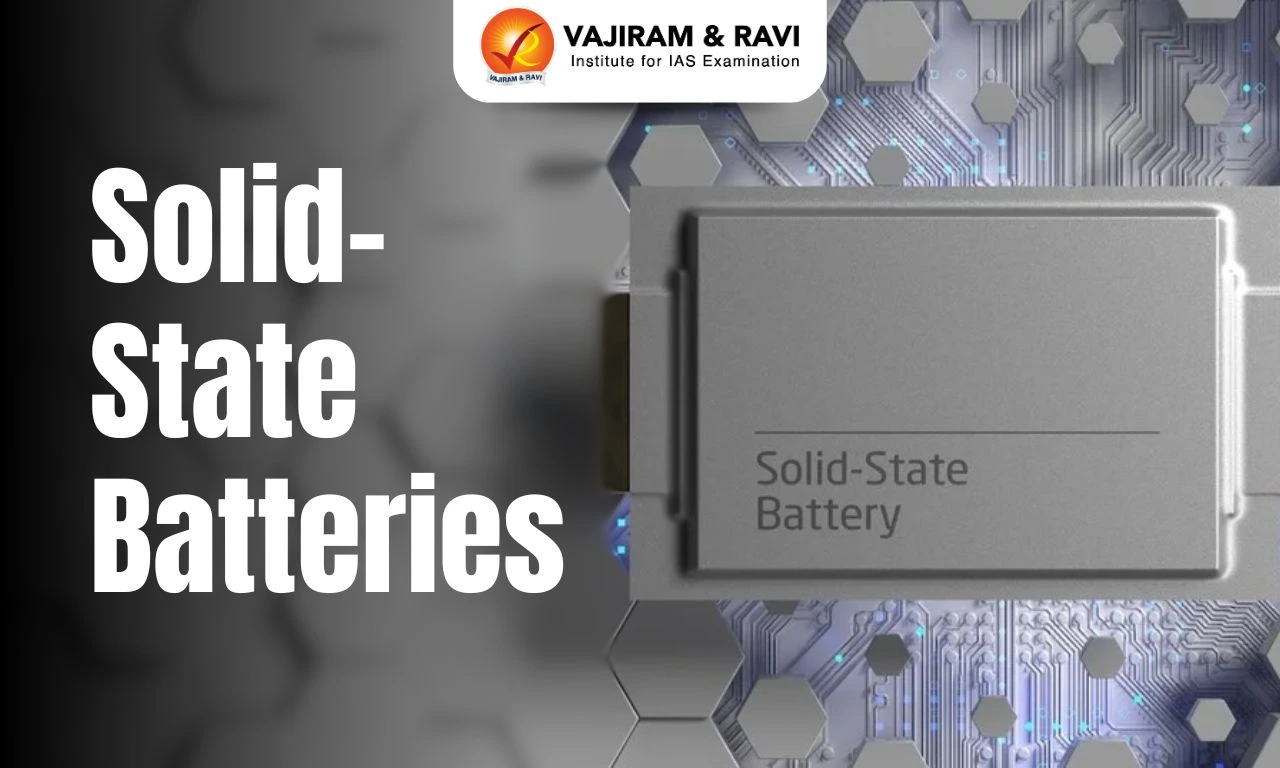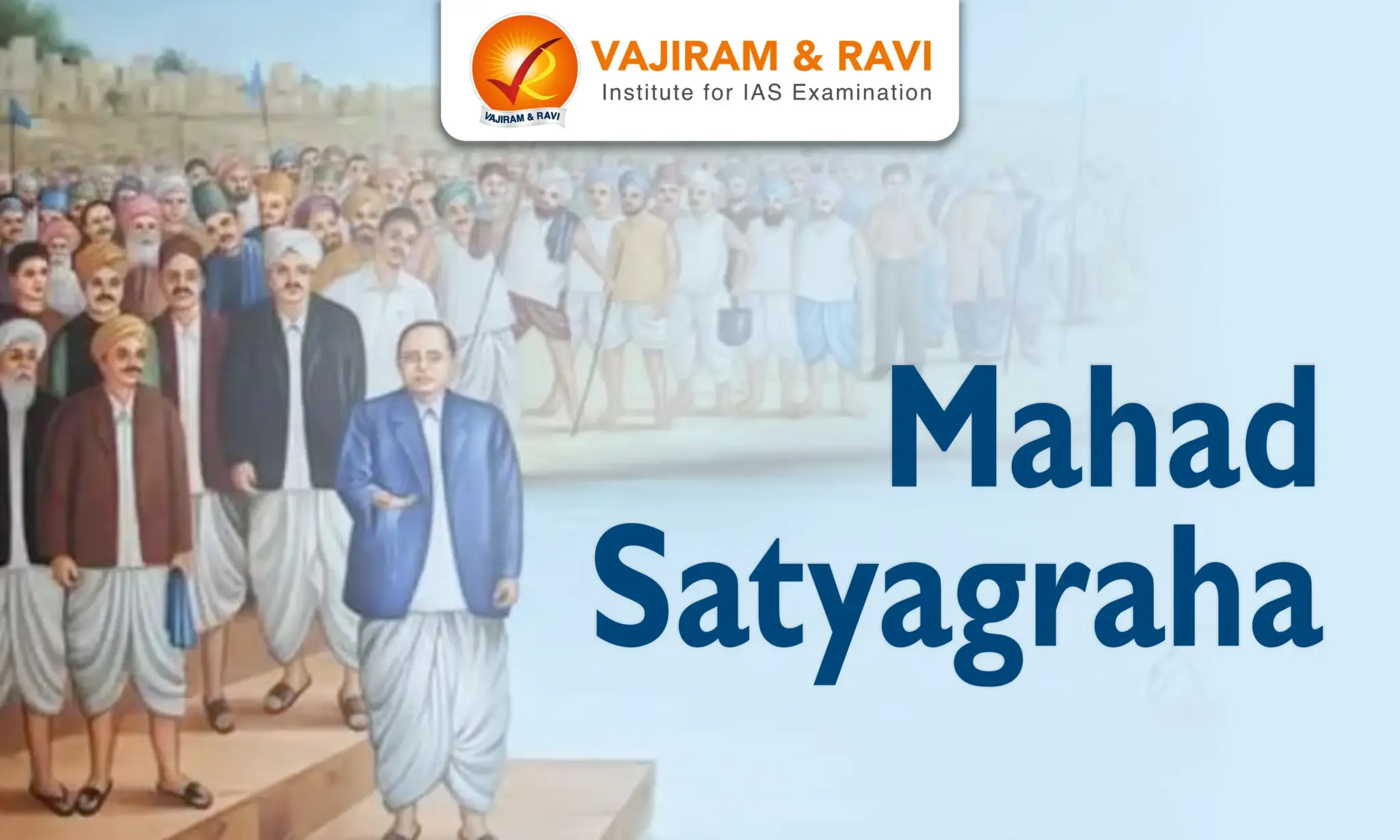Solid-state batteries are a significant advancement in battery technology because they use a solid electrolyte rather than the traditional liquid or gel found in lithium-ion batteries. As a result of this innovation, batteries are safer, more stable, and have higher energy densities.
Solid-state batteries are less prone to overheating and pose a reduced risk of fires or explosions. Their compact design allows for greater energy storage within a smaller footprint, making them highly suitable for a wide range of applications, including electric vehicles, portable electronics, and renewable energy systems.
Working Mechanism of Solid State Batteries

The working of solid-state batteries is basically similar to that of regular lithium-ion batteries, with some significant modifications because of the use of solid electrolytes. It includes:
- Basic structure: Solid-state batteries consist of three main components: an anode (negative electrode), a cathode (positive electrode), and a solid electrolyte that separates them.
- Anode and Cathode materials: The anode is often made from lithium metal in solid-state batteries, which contributes to their higher energy density. The cathode can be made from various materials (lithium cobalt oxide, Lithium Nickel Cobalt Aluminum Oxide, Lithium Manganese Oxide etc.), similar to those used in lithium-ion batteries.
- Solid electrolyte: The key difference lies in the solid electrolyte, which replaces the liquid or gel electrolyte found in conventional batteries. This solid electrolyte can be made from various materials, including ceramics, glass, sulfides, or solid polymers.
- Ion transport: When the battery is charging or discharging, lithium ions move through the solid electrolyte. During discharge, lithium ions travel from the anode to the cathode through the electrolyte, while electrons flow through the external circuit, providing electrical power to the connected device.

- Charging process: During charging, the process is reversed. Lithium ions move from the cathode back to the anode, storing energy in the battery.
Lithium Ion vs Solid State Batteries
The difference between Lithium-ion vs Solid State Batteries can be understood in the table below:
| Aspect | Lithium-Ion Batteries | Solid-State Batteries |
| Electrolyte | Liquid or gel electrolyte | Solid electrolyte |
| Energy density | Lower compared to solid-state | Higher potential energy density |
| Safety | Higher risk of overheating and fires | Safer due to solid electrolyte |
| Lifespan | Shorter due to degradation | Longer, more stable over time |
| Charging Speed | Slower compared to solid-state | Faster potential charging |
| Cost | Less expensive | More expensive |
| Temperature sensitivity | More sensitive, performance drops at extreme temperatures | Less sensitive, potentially better performance |
| Dendrite Formation Risk | Higher risk, especially with lithium metal anodes | Reduced risk due to solid electrolyte |
Significance of Solid-State Batteries
Solid-state batteries represent a significant advancement in battery technology, offering potential improvements over conventional lithium-ion batteries in several key areas such as:
- Enhanced energy density: Solid-state batteries, using a pure metal anode instead of a graphite anode, significantly increase energy density.
- This results in batteries being up to 2-2.5 times more energy-dense than current lithium-ion batteries, leading to smaller, lighter batteries.
- Faster charging capabilities: Recent studies indicate that solid-state batteries could charge up to six times faster than existing battery technologies.
- This is attributed to solid electrolytes performing better at higher temperatures, a common condition during rapid charging.
- Potential for streamlined production: The solid-state electrolyte, being non-liquid, might allow for a more straightforward and efficient production process, using less material and energy.
- Currently, the process of filling cells with liquid electrolytes is time-consuming and complex, involving multiple steps. Solid-state technology could simplify this process.
Applications of Solid-State Batteries
Solid-state batteries hold the promise of revolutionizing various industries due to their enhanced safety, higher energy density, and longer lifespan. Some key applications:
| Arena | Applications |
| Electric vehicles | - Provide for longer range, faster charging times, and improved safety. |
| Consumer electronics | - Provide for reduced charging times, and thinner and lighter designs. |
| Aviation | - The improved energy density and safety could be used in drones, electric aircraft, and space exploration vehicles. |
| Renewable energy storage | - Their higher energy density and longer lifespan make them well-suited for grid storage applications. |
| Medical devices | - Longer life span will aid in the advancement of pacemakers and drug delivery systems. |
| Military | - Development of electric boats and underwater vehicles. |
Concerns Associated with Solid-State Batteries
Solid-state batteries, despite their potential advantages over traditional lithium-ion batteries, face several significant challenges that must be addressed before they can be widely adopted:
- Material compatibility and Interface problems: Identifying materials that work well together is one of the biggest obstacles. Stable interfaces between the solid electrolyte and the electrodes can result in problems with battery longevity and the efficiency of charging and discharging.
- Brittleness and mechanical stability: Brittle solid electrolytes can cause problems for the battery's mechanical stability. They must be able to endure both heat expansion and physical force without breaking.
- Energy density and Power output: While solid-state batteries have the potential for higher energy density, achieving this in practical applications has been challenging. Additionally, the power output (rate of charge and discharge) needs to be comparable to or better than current lithium-ion batteries.
- Temperature sensitivity: Some solid electrolytes have limited performance at lower temperatures, which could restrict the use of solid-state batteries in certain environments or applications.
- Lifecycle and degradation: It is essential to comprehend and enhance the solid-state battery's lifecycle. For applications like electric automobiles, a long life is crucial, and the degradation mechanisms in these batteries can be different from those in liquid electrolyte batteries.
- Cost: Compared to conventional batteries, solid-state batteries still require more expensive materials and production techniques. A lower price is necessary to encourage broad adoption.
Potential Alternatives to Solid-State Batteries
There are several potential alternatives to solid-state batteries, each with its own unique set of advantages and challenges. A few of the alternatives are:
- Graphene batteries: Considering how frequently lithium-ion batteries need to be charged, graphene batteries could prove to be a significant substitute for these batteries. A recently isolated and stabilised substance is graphene.
- Fluoride batteries: Compared to lithium batteries, fluoride batteries have an eight-fold longer lifespan.
- Sand battery: Using silicon, this lithium-ion battery substitute outperforms existing graphite Li-ion batteries by a factor of three.
- The battery is still lithium-ion, just like the one in a smartphone, but the anodes are made of silicon rather than graphite.
- Batteries made of lithium-sulphur: Australian researchers claim to have created the strongest rechargeable battery in the world, one that outperforms existing models by a factor of four.
- Electrodes made of vertically aligned carbon nanotubes are an excellent option for lithium-ion batteries that need to have high rates and capacities.
- Fuel cells: Fuel cells, such as hydrogen fuel cells, convert chemical energy from fuels into electricity. They are more commonly used in transportation and stationary power generation, offering high energy efficiency and low emissions.
- Supercapacitors: Supercapacitors offer very fast charging and discharging, high power density, and excellent cycle life. However, their energy density is much lower than that of chemical batteries, limiting their use as primary energy storage devices.
Last updated on November, 2025
→ Check out the latest UPSC Syllabus 2026 here.
→ Join Vajiram & Ravi’s Interview Guidance Programme for expert help to crack your final UPSC stage.
→ UPSC Mains Result 2025 is now out.
→ UPSC Notification 2026 is scheduled to be released on January 14, 2026.
→ UPSC Calendar 2026 is released on 15th May, 2025.
→ The UPSC Vacancy 2025 were released 1129, out of which 979 were for UPSC CSE and remaining 150 are for UPSC IFoS.
→ UPSC Prelims 2026 will be conducted on 24th May, 2026 & UPSC Mains 2026 will be conducted on 21st August 2026.
→ The UPSC Selection Process is of 3 stages-Prelims, Mains and Interview.
→ UPSC Result 2024 is released with latest UPSC Marksheet 2024. Check Now!
→ UPSC Prelims Result 2025 is out now for the CSE held on 25 May 2025.
→ UPSC Toppers List 2024 is released now. Shakti Dubey is UPSC AIR 1 2024 Topper.
→ UPSC Prelims Question Paper 2025 and Unofficial Prelims Answer Key 2025 are available now.
→ UPSC Mains Question Paper 2025 is out for Essay, GS 1, 2, 3 & GS 4.
→ UPSC Mains Indian Language Question Paper 2025 is now out.
→ UPSC Mains Optional Question Paper 2025 is now out.
→ Also check Best IAS Coaching in Delhi
Tags: quest solid-state batteries

















